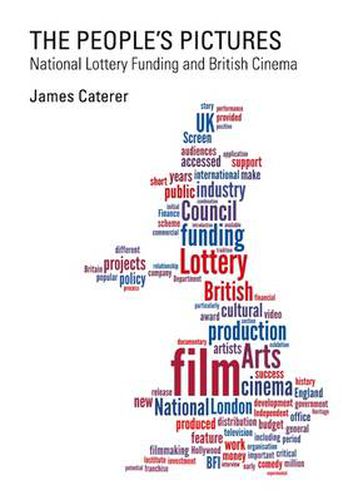Readings Newsletter
Become a Readings Member to make your shopping experience even easier.
Sign in or sign up for free!
You’re not far away from qualifying for FREE standard shipping within Australia
You’ve qualified for FREE standard shipping within Australia
The cart is loading…






When John Major launched the UK’s National Lottery in 1994 he christened it the people’s Lottery and handed it to the mythical stewardship of the Everyman. But when the proceeds began to be distributed to worthy causes, including the British film industry, this populist rhetoric came under increasing strain. If Lottery funding is used to produce the type of British films which the public want to see, such as romantic comedies, then many question whether the market deserves such subsidy. Short films and low budget, experimental cinema - which often require state support - tend to go unwatched by large swathes of the Lottery ticket-buying public. This book explores the debates which were sparked by the arrival of the people’s pictures , and places them in historical context by examining their many precedents. Is public patronage a boon or a burden for filmmakers? And how do institutional cultures or political buzzwords affect the finished films? Case studies include the popular hits Billy Elliot (2000) and Shooting Fish (1997); art-house releases such as Love Is The Devil (1998) and Gallivant (1997); short films by Lynne Ramsey and David MacKenzie; and artists’ film and video work by Bill Viola and Tracey Emin.
$9.00 standard shipping within Australia
FREE standard shipping within Australia for orders over $100.00
Express & International shipping calculated at checkout
When John Major launched the UK’s National Lottery in 1994 he christened it the people’s Lottery and handed it to the mythical stewardship of the Everyman. But when the proceeds began to be distributed to worthy causes, including the British film industry, this populist rhetoric came under increasing strain. If Lottery funding is used to produce the type of British films which the public want to see, such as romantic comedies, then many question whether the market deserves such subsidy. Short films and low budget, experimental cinema - which often require state support - tend to go unwatched by large swathes of the Lottery ticket-buying public. This book explores the debates which were sparked by the arrival of the people’s pictures , and places them in historical context by examining their many precedents. Is public patronage a boon or a burden for filmmakers? And how do institutional cultures or political buzzwords affect the finished films? Case studies include the popular hits Billy Elliot (2000) and Shooting Fish (1997); art-house releases such as Love Is The Devil (1998) and Gallivant (1997); short films by Lynne Ramsey and David MacKenzie; and artists’ film and video work by Bill Viola and Tracey Emin.